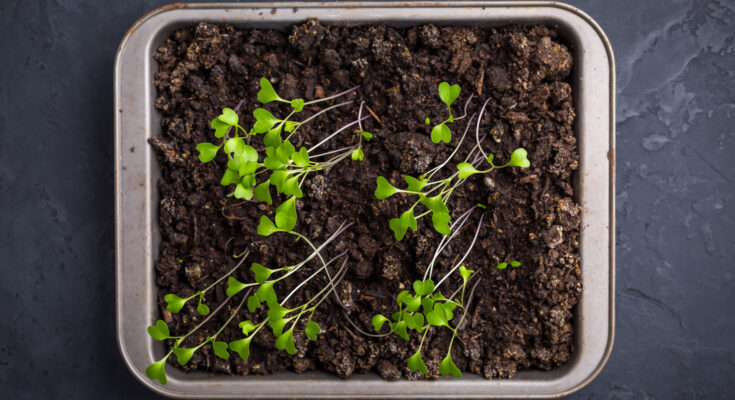Seedlings Most Prone To Legginess That You Need To Keep An Eye On When Growing
Leggy seedlings can be a disappointing sight. With their stretched out, spindly stems and lack of leaves, they’re as weak and vulnerable as they appear and may not be able to survive outdoors. In order to save your garden seedlings, it’s important to act fast. Keep a close eye on seedlings that are prone to legginess, including those with high light requirements, those that are sown early in the spring, and any seedlings growing indoors.
Legginess is usually caused by one central problem: a lack of sufficient light. Even mature plants can become leggy if they don’t get enough light, as they stretch out taller and sometimes bend in one direction in search of more. The search for light begins as soon as seeds germinate, and in the seedling stage, light requirements are high — they need up to 16 hours of bright, direct light per day. Seedlings can also become leggy if the light is too far away, or if overcrowding is forcing the seedlings to compete with one another for light. Other stressors can also contribute to legginess, such as a burst of rapid growth caused by excessive heat.
Because less sunlight reaches the indoors, any seeds you start inside have a higher risk of becoming leggy. But some particular species are even more prone to this issue than others, including those that require the highest amounts of light, such as tomatoes, peppers, and eggplants.
Other plants to watch, and what to do
Other plants with higher light needs that may become leggy include herbs such as basil, as well as brassicas like cabbage, broccoli, and cauliflower. Additionally, plants that tend to be started in seasons with shorter daylight hours are more vulnerable to legginess, including kale, lettuce, zucchini, and beets.
A common mistake gardeners make with seedlings is to stick them on a bright windowsill, but that may not provide enough light. Seedlings require 12 to 16 hours of direct light per day, which can often only be achieved with the help of a grow light. Look for one with a balanced spectrum, broad spectrum, or blue-green spectrum of light and place it a few inches above your seedlings. Thin your seedlings to prevent overcrowding. Check the temperature requirements for your plants and keep them cool after germination if needed. Lastly, placing a fan nearby can help encourage them to grow stronger stems.
Even if your seedlings have gotten a bit leggy, they’re not necessarily doomed; following the steps above can turn things around before it’s time to transplant them. An even more foolproof way to prevent legginess is to start seeds outdoors whenever possible, even if it means sowing them a little later.



